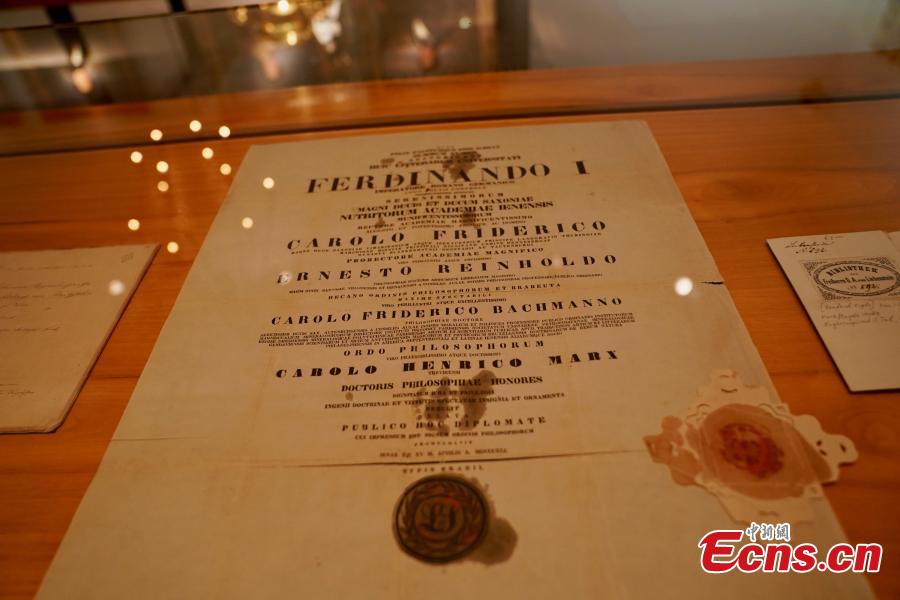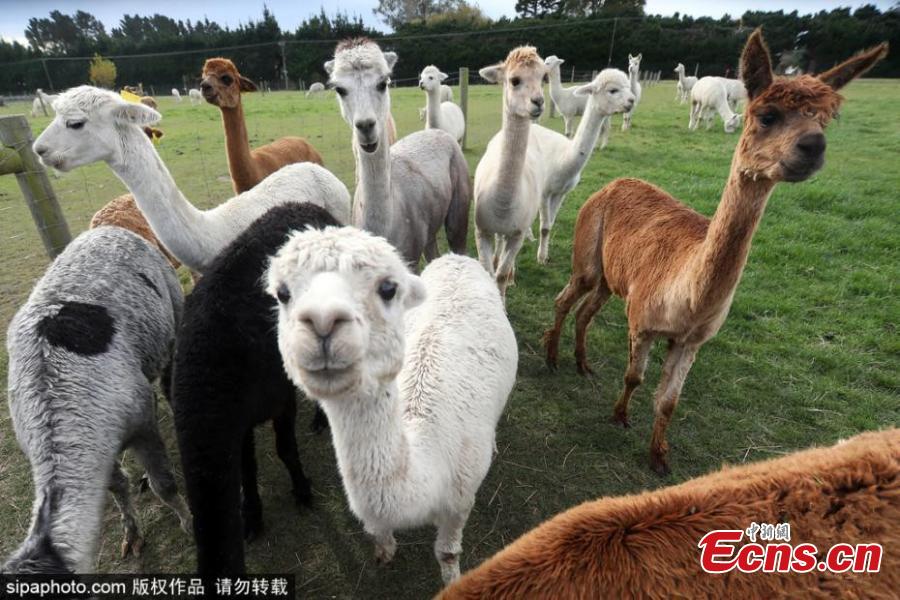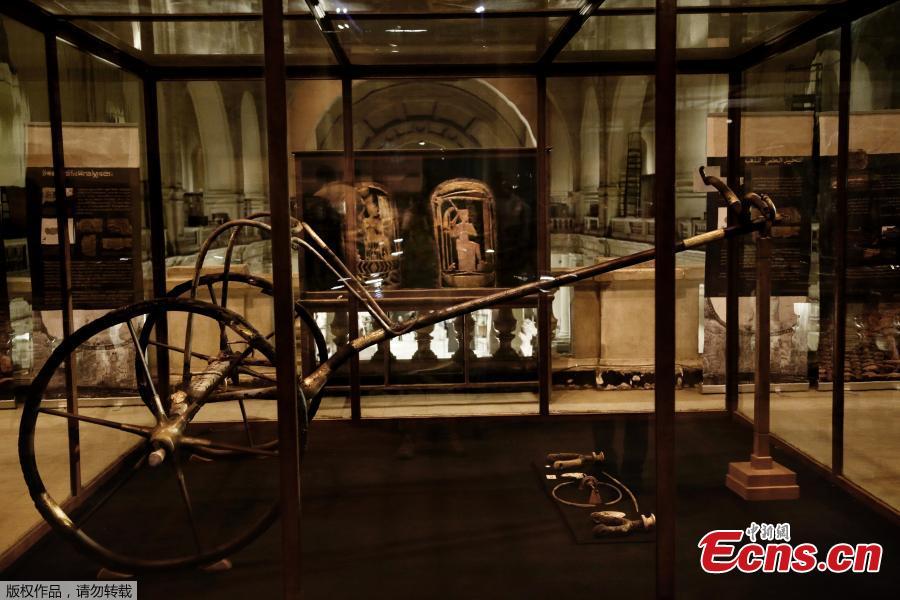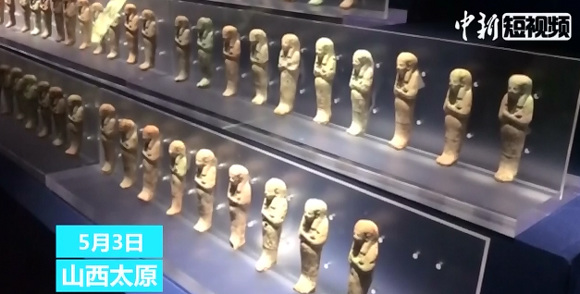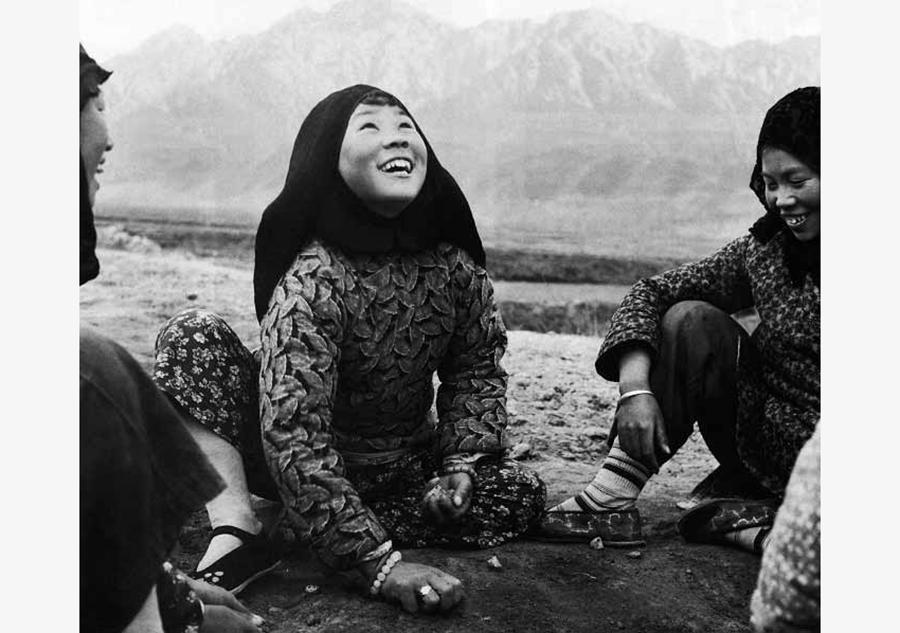
A photo of a Bonan girl in 1956, taken by Ma Naihui. (Photo/China Photographers Association)
China is a large united multi-ethnic state. Besides Han, which takes up over 90% of China’s population, there are 55 ethnic groups in this big country, with their costumes, festivals and customs.
These numerous groups share China's vast lands but at the same time many live in their individual communities. The relationships between them have been formed over many years. Now let’s have a look at some old photos of the 56 ethnic groups and learn about their culture.
Bonan ethnic group
Inhabiting Gansu province, the Bonan people tend to grow highland barley, wheat and corn. They only eat beef and mutton and refuse to eat non-ruminants and their by-products.
The Bonan people boast a thriving handicraft industry as almost everyone is an expert in knife forging on brass, copper or ox bones. This handicraft industry has a long history of over a hundred years.
Bonan musical forms of songs and dances sound distinctly similar to the Tibetan ones. The men play traditional stringed or woodwind instruments and often perform impromptu pieces.
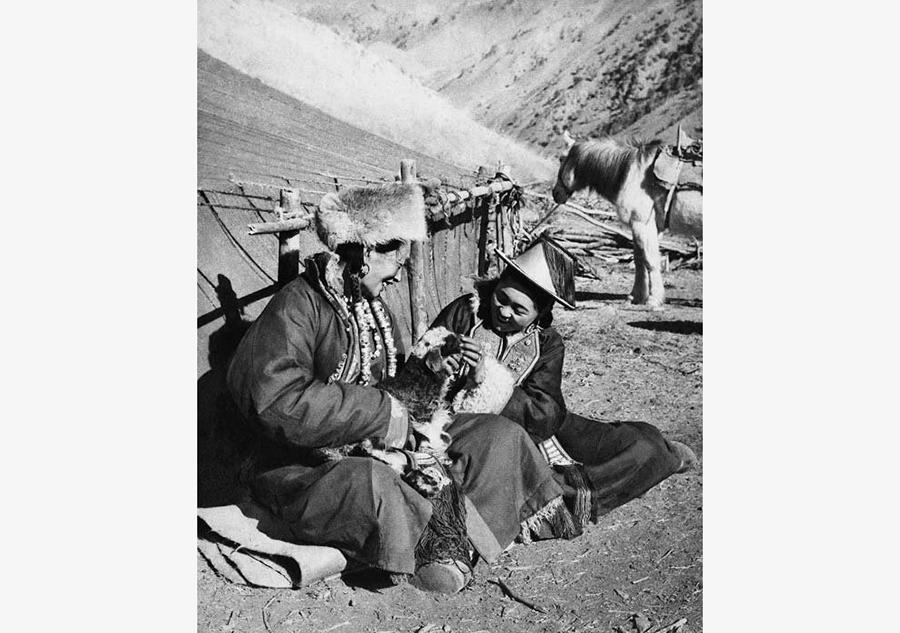
Yugur women with their lamb, photo taken by Ma Naihui in 1957. (Photo/China Photographers Association)
Yugur ethnic group
As the Yugur people live by stock raising they usually eat beef, mutton, and pork. Due to the special climatic conditions, fresh vegetables are rare, and only some potherbs such as the wild shallot and leek can be found. Fresh mushrooms are the main vegetables in the fall.
They are renowned for their hospitality. No matter when guests arrive, they will feast them with great kindness. They are deft at weaving and embroidering. Like other nomadic nations they live in tents.
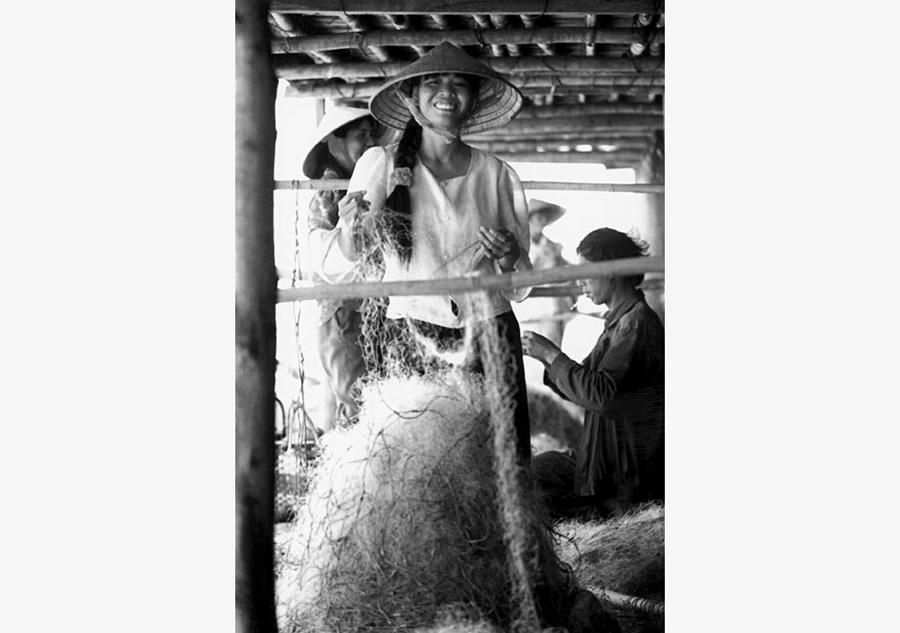
A Jing fisherman weaves fishing net in 1995. (Photo/China Photographers Association)
Jing ethnic group
Inhabiting Guangxi, Jing people live mainly from fishing and farming. Whenever the men launch their fishing boats, the old people, and the women and children, see them off with prayers. After eons of practice, they have become experts at all kinds of fish and fishing methods.
Their staple foods are rice and seafood. Men of the Jing ethnic group have the habit of smoking while women chew betel nuts. Their clothes are simple but beautiful. They choose silk and gauze as the main materials. Women usually wear a tall spire hat to avoid the strong sunshine and rain.
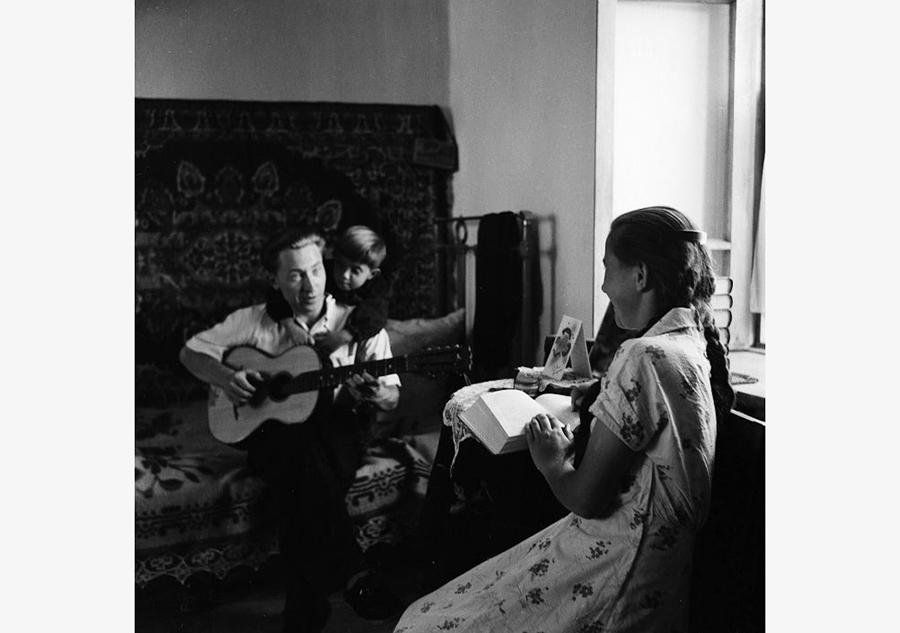
A photo of a Tatar family, taken by Ma Naihui in 1959. (Photo/China Photographers Association)
Tatar ethnic group
Inhabiting Xinjiang, the Tatar people are sustained primarily by commerce, supplemented by livestock husbandry, agriculture and handicrafts. The Tatar women are proud of their culinary skills. They bake cakes made of flour, rice, cheese, egg, butter, raisin, etc. For drink, they brew a honey wine which tastes like beer.
Etiquette is very important for the Tatar people. When family members sit at a dining table, the most senior is served first, followed by the rest ordered by age. Dinner is not complete until ended with a prayer. In their daily life, they greet each other by shaking hands. They respect the old people and treat guests warmly and they do not joke with women.

The Derung people walk on a suspension bridge to cross the Dulong River, photo taken by Song Linwu in 1985. (Photo/China Photographers Association)
Derung ethnic group
Located in a canyon with a depth of 3,800 meters and surrounded by the Tibetan Plateau in the north, the Gaoligong Mountain in the east, and the Dandanglika Mountain in the west, the inhabited area of the Derung people was isolated.
Although the Derung ethic group is one of the smallest groups among the 56 ethnic groups of China, their hometown abounds in numerous rare herbs and Chinese caterpillar fungus.
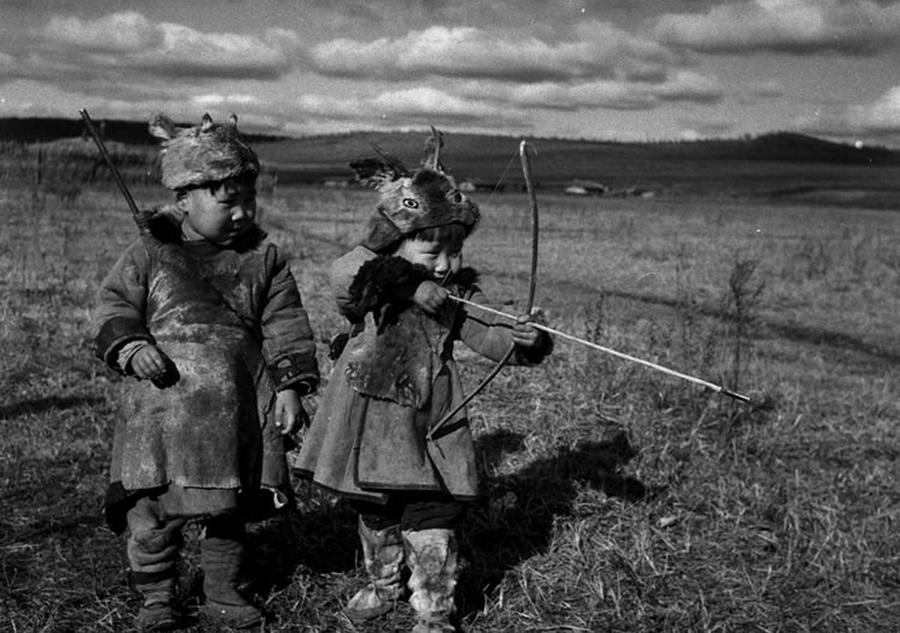
Two Oroqen children learn how to shoot an arrow, photo taken by Zhuang Xueben in 1954. (Photo/China Photographers Association)
Oroqen ethnic group
Bestowed with rich resources, there are a large variety of wild animals, which have provided the Oroqen people with a hunting life for hundreds of years. Records of their hunting can be traced back more than 1,000 years.
Oroqen men are apt at making wares with bone, wood and iron. Women are good at sewing leather clothes and carving on wares made of birch-bark. Birch-back is a durable, light and water-proof variety of wood. Oroqen people take great pride in their boat building abilities. Boats are a very important form of transportation and have retained their importance even though other forms of vehicles are now available to them.
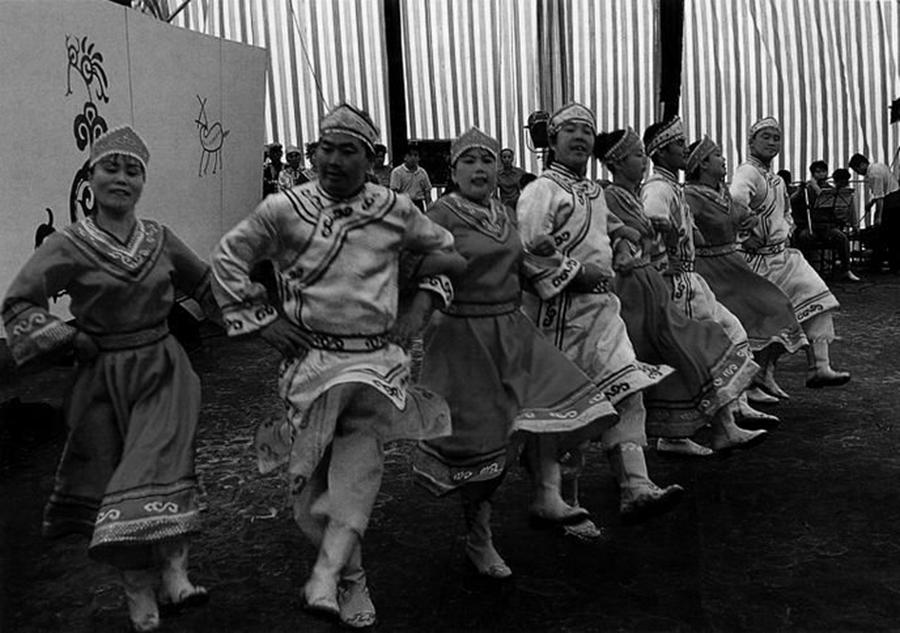
The Hezhe people celebrate their traditional festival, photo taken by Du Dianwen in 2000. (Photo/China Photographers Association)
Hezhe ethnic group
Inhabiting Heilongjiang, the rivers provide the Hezhen people with rich sources of fish and other wild animals. Intelligent people do quite well in making use of those gifts. They live on fishing and hunting, travel by snow dog sleds, and wear clothes of fish and deer skin.
The Hezhen customs related to food are unique. Before drinking wine, they must dip chopsticks in the wine, cast it to the sky and sprinkle it on the land. This is an expression of respect for both the gods and their ancestors. They do not care for drinking tea, except the tea flavored with wild rose. Instead they prefer unboiled cold water.
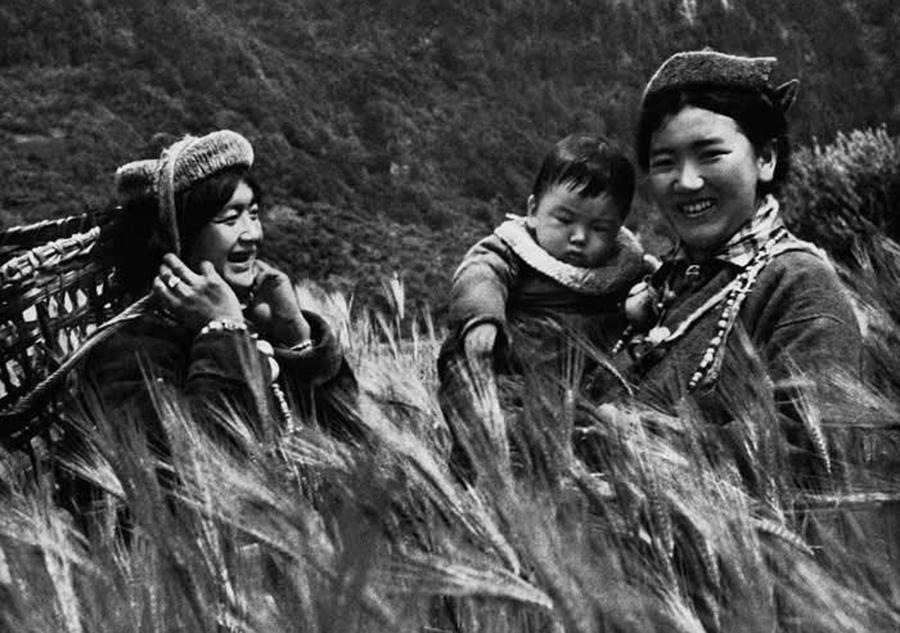
A photo of two Monba women and a child, taken by Ma Jingqiu in 1960. (Photo/China Photographers Association)
Monba ethnic group
Inhabiting Tibet, The Monba Region is abundant in resources and it is home to many rare herbal medicines, animals and trees. The Monba people live mainly on agriculture with some hunting, collecting and stock raising.
They are quite warm hearted. They are good at weaving with bamboo strips and vines. Wooden bowls have been their pride for a long time. These wooden dishes are not only suitable holding food but are also delicate artworks, making ideal gifts for visitors.
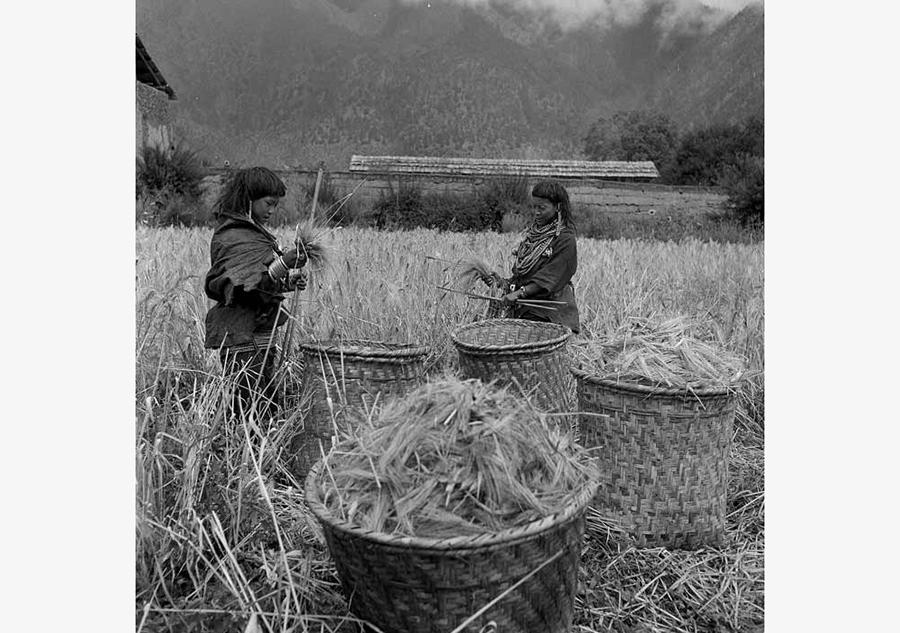
The Lhoba people harvest highland barley, photo taken by Uzinarisi in 1960. (Photo/China Photographers Association)
Lhoba ethnic group
Living at the foot of Himalayas, almost completely isolated from the outside world and kept in virtual slavery by the government of Tibet, the Lhoba lagged behind the rest of the world until the 1950s when with the help of the Chinese government, all aspects of their life began to improve. Blessed with a wide variety of resources, ranging from animals and plants to minerals, the Luoba economy is based on agriculture and hunting.
The Luoba people are very hospitable and places high value on etiquette. They hunt with poisoned arrows, so meat must be treated after the animal is cut up. Before dinner, the host will drink and eat a little to show that the food is safe.
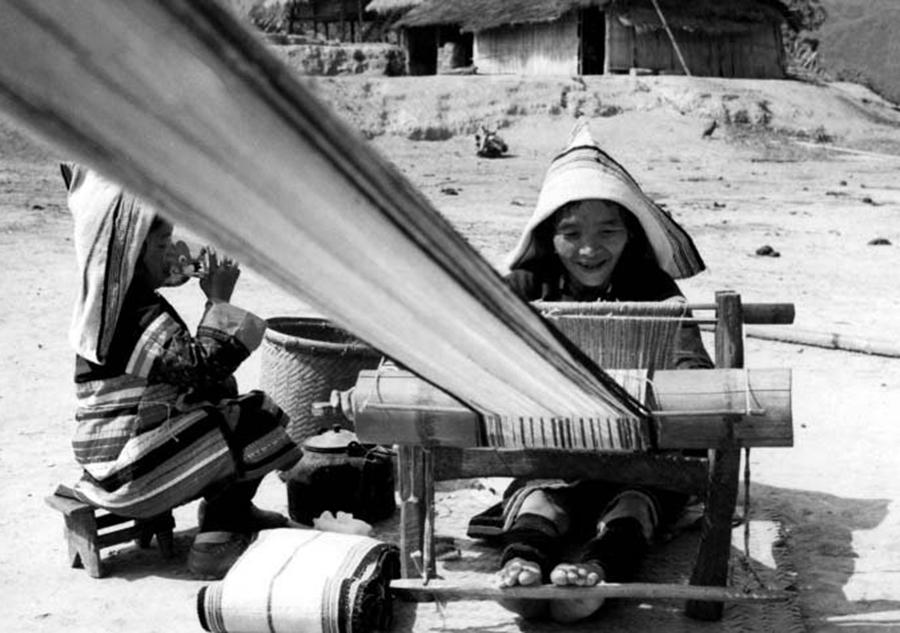
A Jino woman weaves cloth, photo taken by Zhou Chongyao in 1988. (Photo/China Photographers Association)
Jino ethnic group
Inhabiting Yunnan province, the Jino women learn to embroider in childhood while men like to carve the handles of sickles and musical instruments and to weave with thin bamboo strips.
They eat rice and corn. Jino dishes are fresh and spicy and maintain the original fragrance of the ingredients. They like brewing and drinking wine, which they feel help cure rheumatism and arthritis. They also like to chew betel nuts. For a long time dyed-black teeth were thought to be beautiful and a protection from moths.
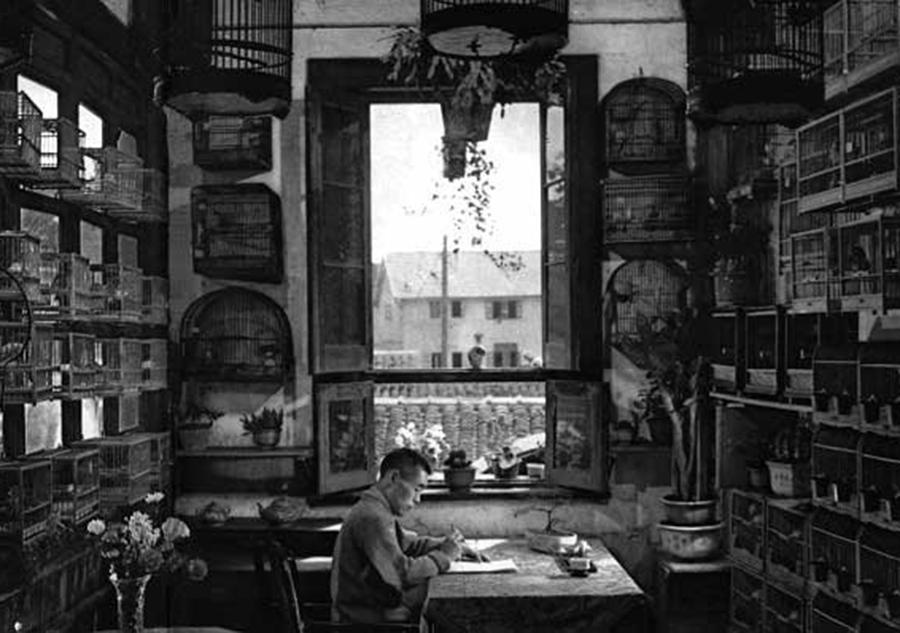
A Han man writes a book about the birds after retiring in Beijing, photo taken by Wang Fuzun in 1963. (Photo/China Photographers Association)







